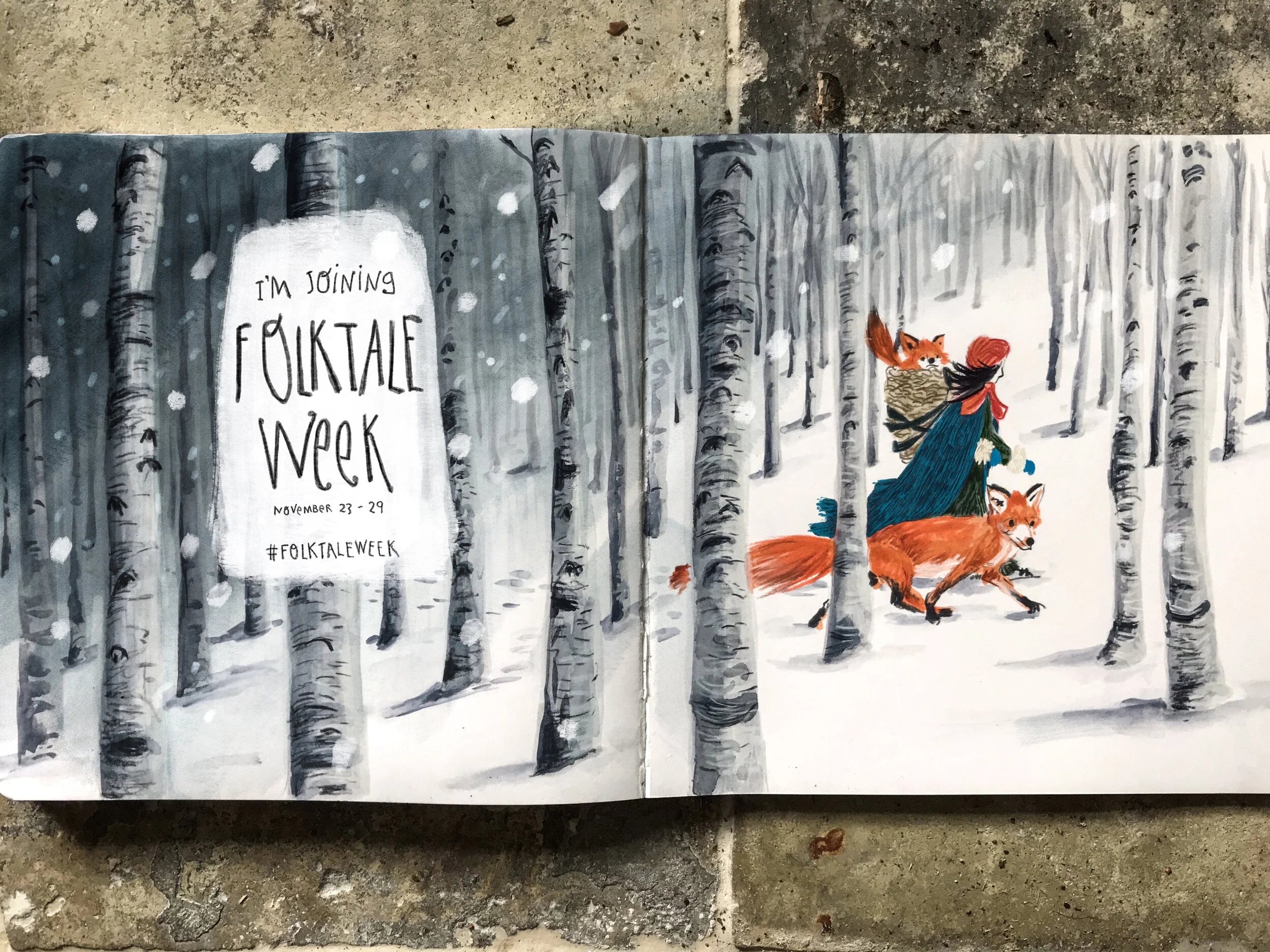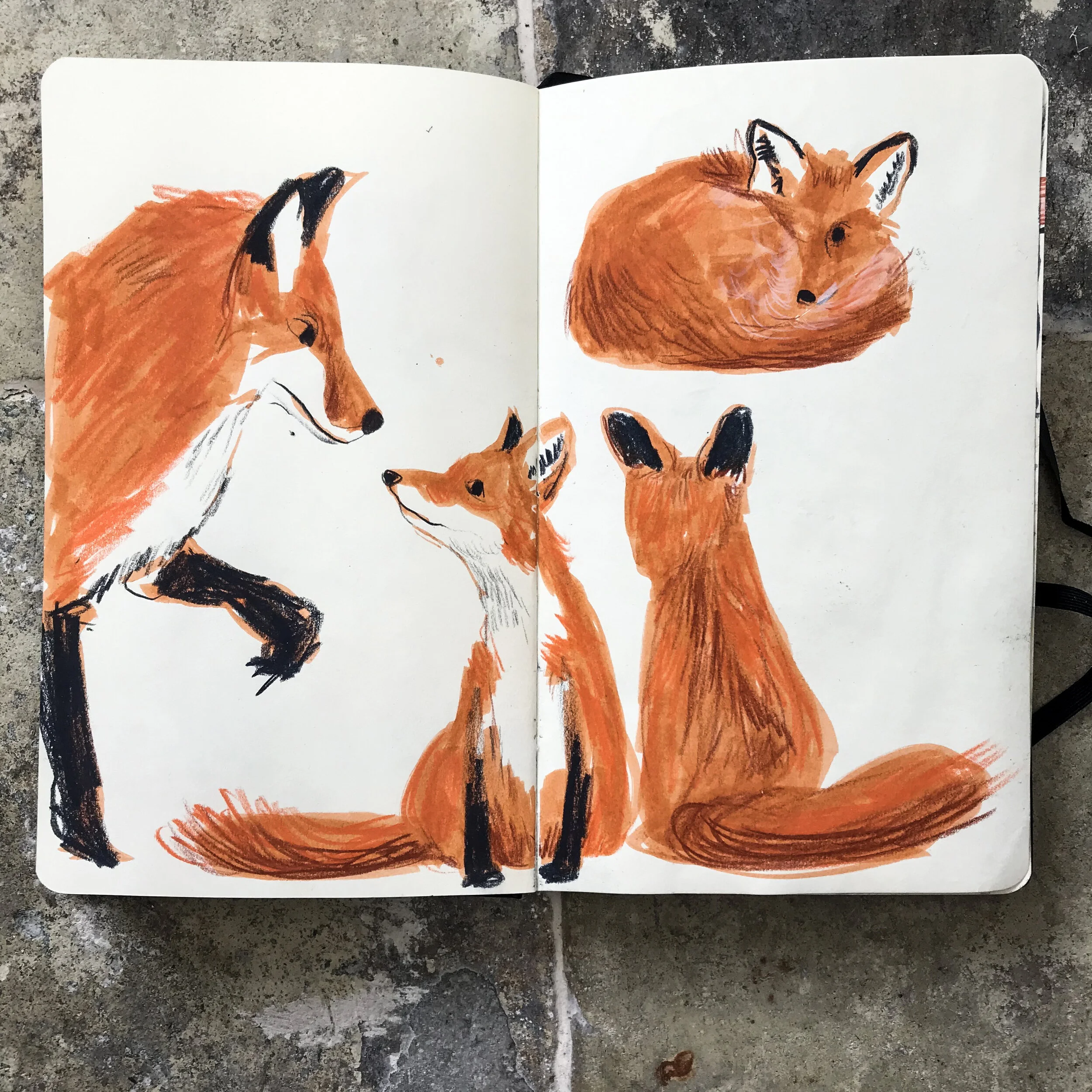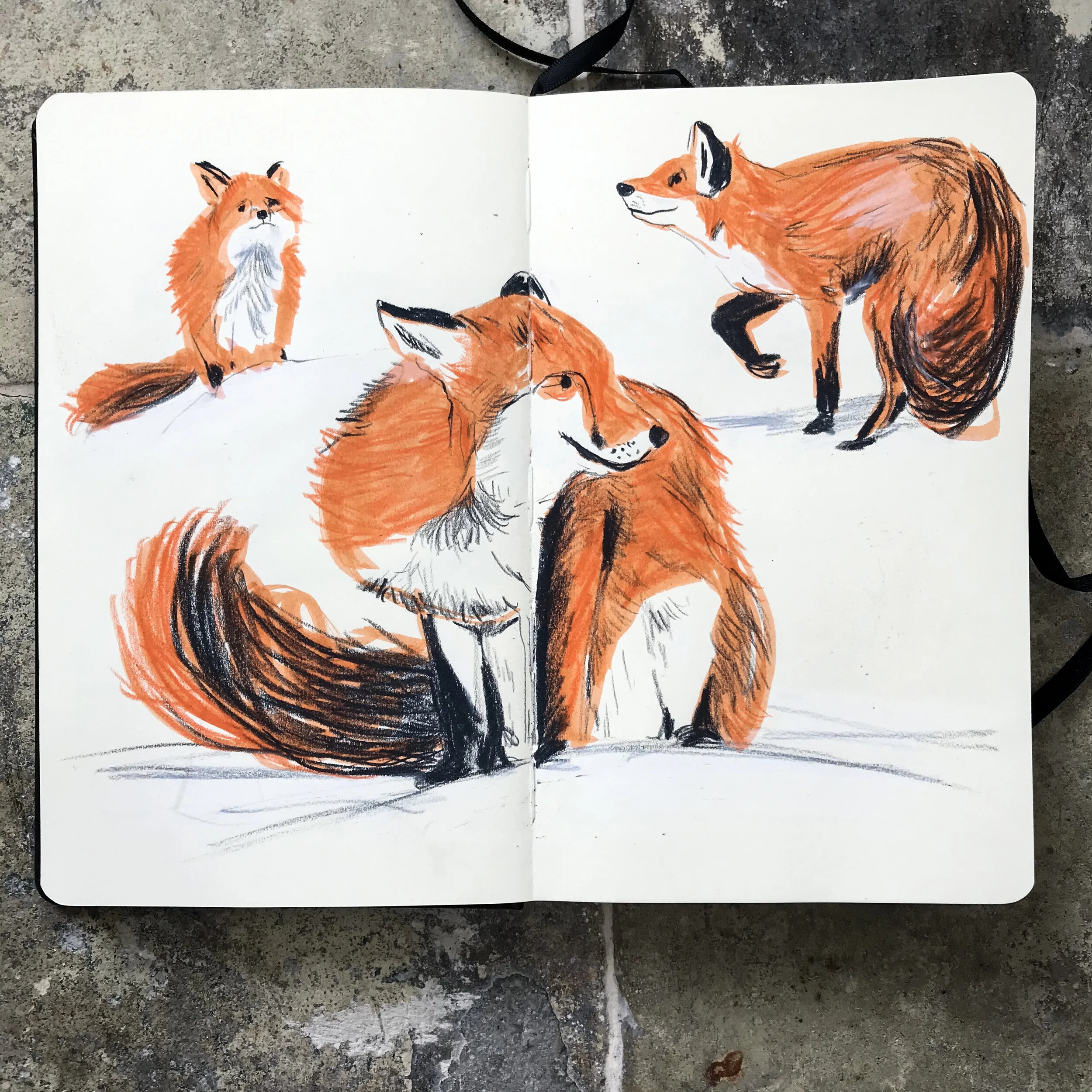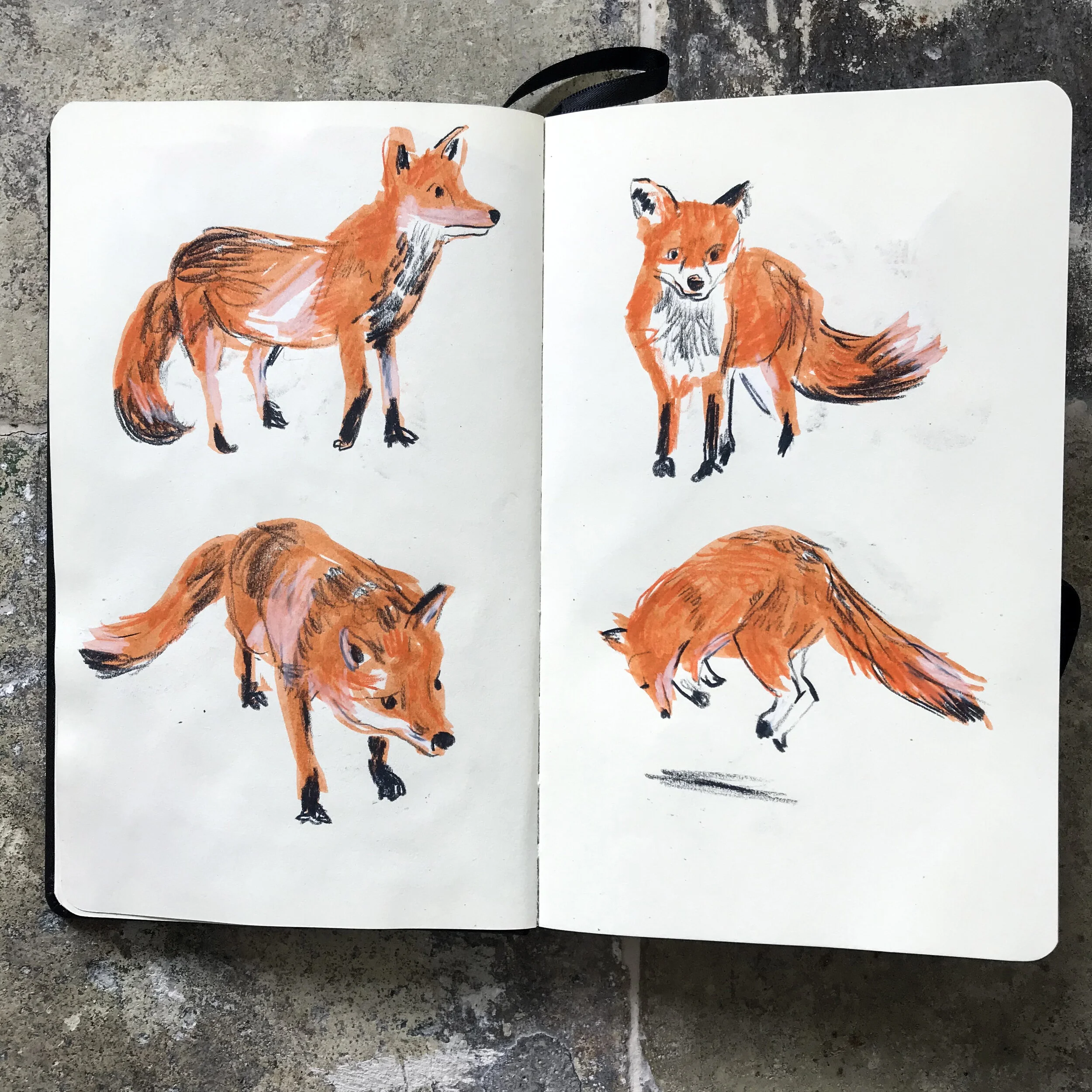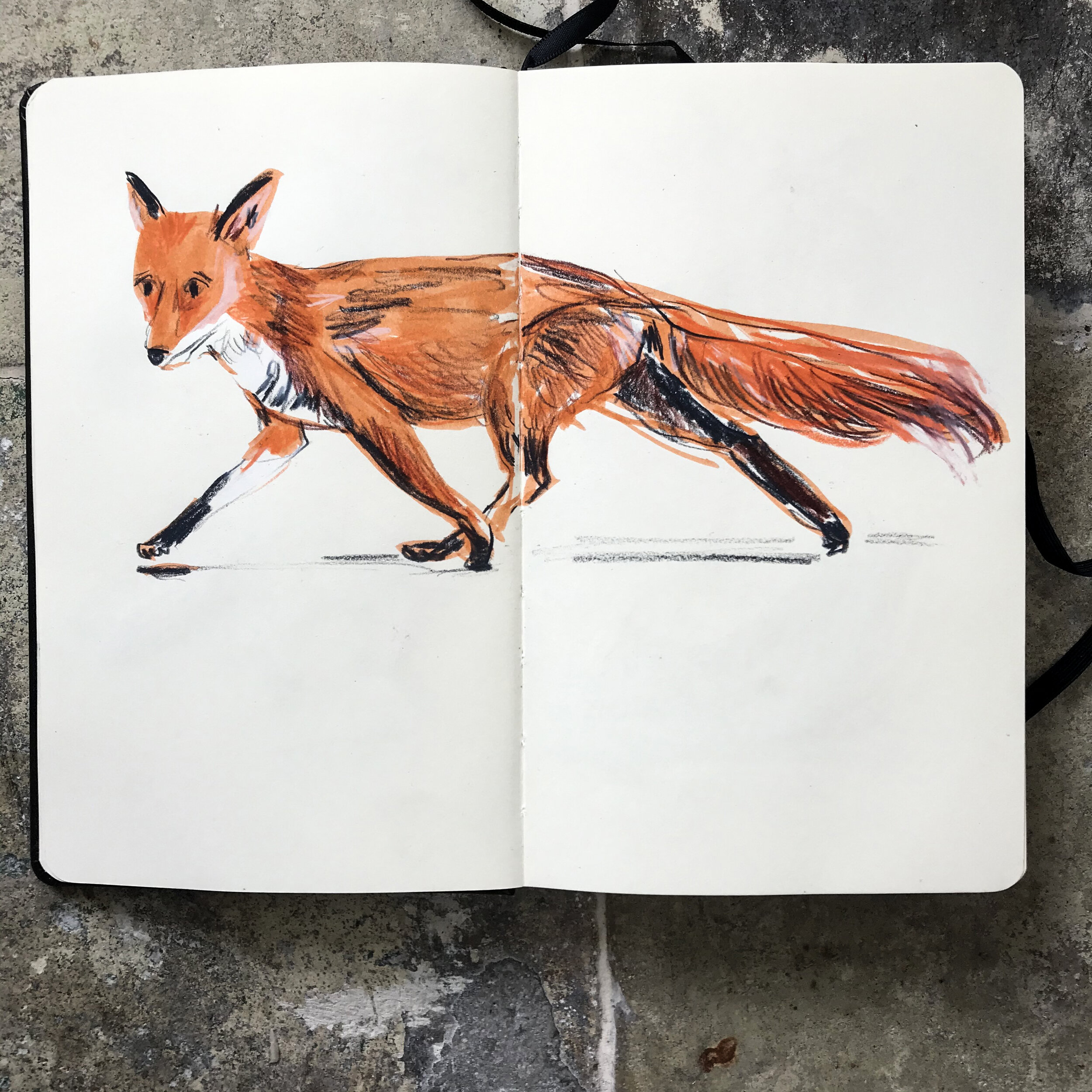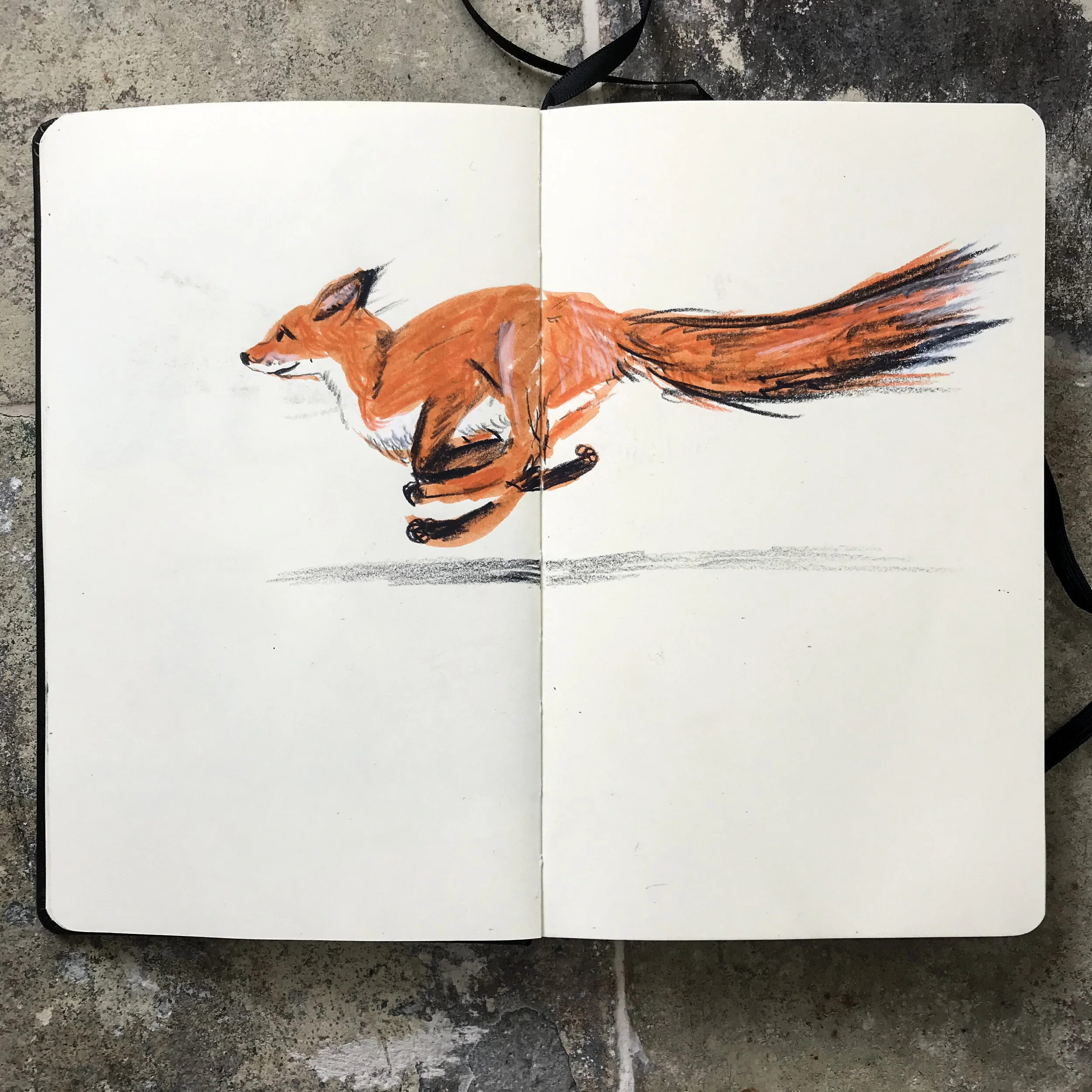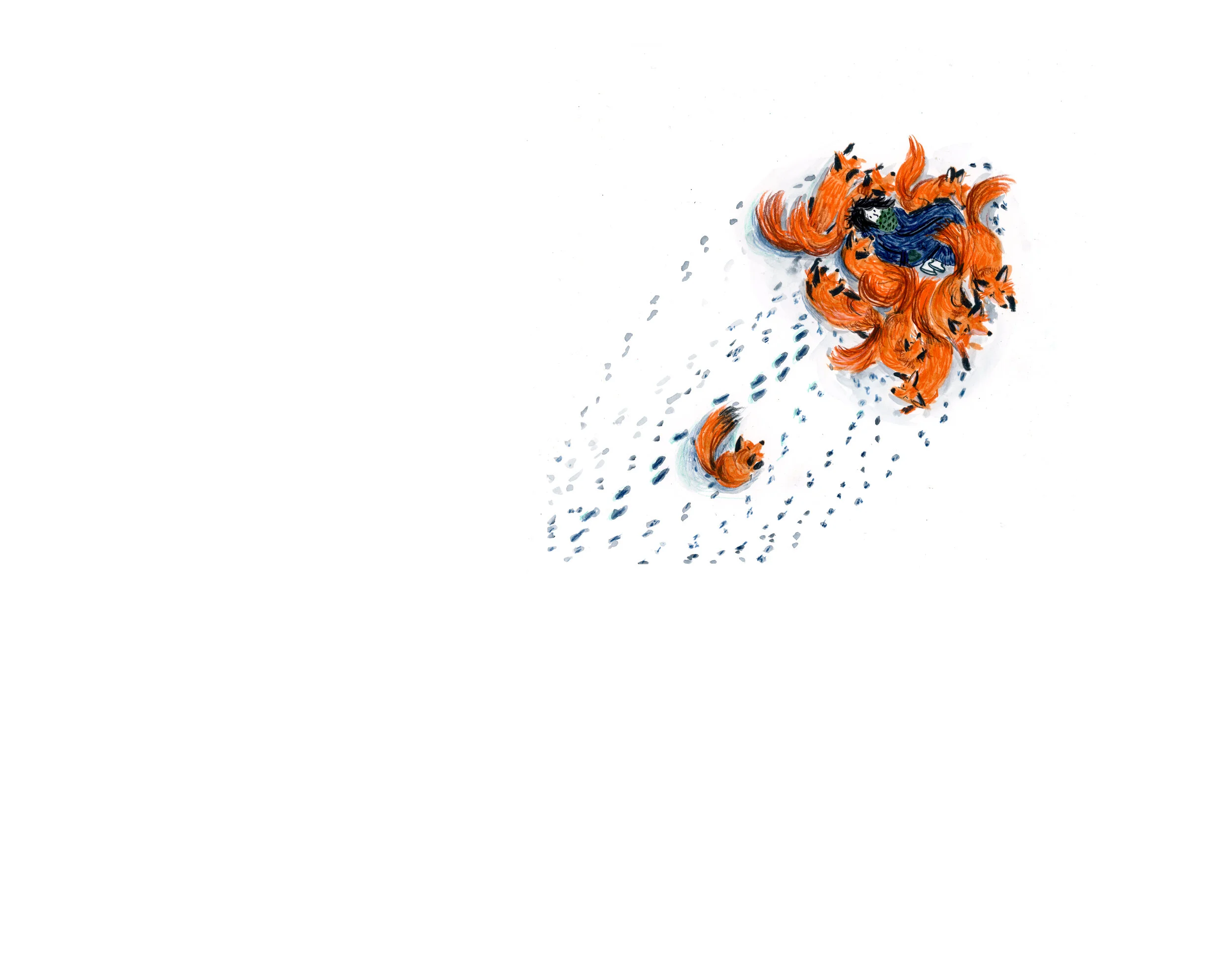Folktale Week 2020 - The Girl who could talk to Foxes
The girl who could talk to foxes
Folktale Week 2020 has just finished and I am in withdrawal from my daily painting marathons! I had a ball this year as I decided to try not to overthink or try to be clever or original, but instead, I just to dive into something I was interested in drawing and put in all the things I love without worrying that perhaps they are too cliche or not special enough. And so I thought I’d just share here a few of my thoughts about the week and a little bit about my process.
I think that decision to trust my instincts and not overthink actually came from being quite overwhelmed by the tricky prompts that were guiding this years Folktale Week. These were, in order - Birth - Ritual - Courtship - Solstice - Death - Harvest - Dance. They felt so serious and were concepts rather than things so i started to overthink and feel uninspired.
So, to get myself out of that hole I decided to simplify everything and create myself an easy way to just get going. So, I decided to start with a creature I really like but have never drawn and to use the week as a goal to get to know how to drawing it better - foxes! I had planned to be super organised, and make all the pieces in advance, but in the end the only thing I did in advance was an ‘announcement piece’ where I declared my intention to do folktale week and a heap of sketchy fox drawings getting to know how they move and what they look like in different scenarios and activities.
Long term illustrators whose process I have learned about through podcasts and following them, always have said that if you draw something enough, you build up an image library of how it works in your mind and then can just draw it, and get the real essence of it, without any references at all. Until recently, I don’t think I believed them.
I feel like I should put more images of me on here… but I hardly take any. So here’s one of me in late summer trying to punt in Cambridge…
But recently I realised it’s actually true. I started to notice in my practice that I can easily draw people without needing any reference, and now also buildings - particularly terraces and ones with lovely attic windows etc., and that these have a particular life about them purely because I’ve drawn them sooo often. I’ve drawn so many different windows from life whilst out on the street drawing, that now when I illustrate I have a window library in my mind. Same with people. So, I hoped by the end of the week I’d be able to draw foxes without any reference and just have them ‘come out’ of my mind onto the paper doing the thing I wanted them to do.
Because I wasn’t organised like I planned, I ended up having to do what I always do when I have a deadline and have to really get something done. I got up at 6am and just worked solidly until I had an illustration and story to tell for that day. Somehow this early work just means I get things done. I think it’s because I’ve did the hard job of getting out of bed in the cold and dark, I feel like I can’t ‘waste’ it and also because I’m fresh I really focus. And then, because I started the important task before I did anything else - like emails or replying to DMs etc., the important task becomes the thing I actually want to do because I’m already into it by the time I get distracted and then, magically, it gets done!
So, I think I’ll just share each image I made, and the story I wrote to go with it, and then add a bit of a reflection on how it felt and what I learned at the end.
Day one - Birth
On the day Freya was born, foxes filled the streets of her village, and from that day onwards everyone knew she was different. Throughout Freya’s earliest years, people would spot the foxes near her house, only at night. But by the time she turned five, foxes appeared every time she went walking.
Day Two - Ritual
After a while, Freya learned that not everybody loved foxes. In fact, in her village people didn’t like them at all.
When she turned 12, the foxes told her what happened to them every month. Freya was heartbroken. So when the moon shadow got long, Freya began what was to become a monthly ritual. She met them all by the lake shore and ferried them in groups out to a little island. There, they were safe from the monthly hunt.
Day Three - Courtship
Freya wasn’t popular in the village. Known to everyone as the girl who could talk to foxes, she was looked at warily.
So, when a young man from the village started to talk to Freya at every opportunity, Freya, and her fox friends were very suspicious. The foxes kept their eye on him, and on Freya. Yet, he kept appearing, smiling and sometimes with flowers.
This scene was inspired by the most gloriously pink manor that Dave and I went to visit in deep snow in Estonia. It was such a stunning site, bright pink against the white of the snow… and I just thought how good the oranges of the foxes would look there too.
Day Four - Solstice
It was when Freya was 16 and the nights were their longest and the days their shortest, that the young boy went missing. The villagers immediately blamed the foxes, and with them, Freya. Nobody defended her, even the beau that had been bringing her flowers. They cast her out of the village into the snow.
Frey was so distraught that she just ran and ran and ran. The foxes, of course, ran with her. They ran until Freya could run no longer and she lay down in the snow. The foxes weren’t sure what to do. They knew that they couldn’t bring Freya down into a cosy burrow, and knew she would freeze to death in the snow. So, they curled up around her to try to keep her warm.
Day Five - Death
A week or so passed and the boy had not turned up. Freya and the foxes walked back to the village every evening to see what was happening. On the tenth day, as was custom, when they got to the village they saw they everyone had begun the rituals to mourn the boy’s death – no-one can survive for long out of the village when it was this cold. The young women had gathered into a circle and were singing. Freya’s heart was again broken. She was so sad for the loss of the boy, and also because she so deeply wanted to be part of the village, to be an accepted part of the singing circle.
I totally loved drawing this one. I want to live in that village, in one of those tiny timber houses. It was inspired by a beautiful famous village we visited in Japan called Ogimachi, on a very wintery day when the village was buried deep in snow. I don’t think there is a more magical village in the world than that one. I was inspired by first, Orange Beak Studio, then Good Ship Illustration, to put more of my own life into my drawings, but for ages I don’t think I knew what that meant. I think I thought it meant finding more super ‘hip’ things to love, like vintage dolls or random records etc., but I think I recently realised its actually just drawing very genuinely on what I love. I totally love to travel, so why don’t I use that. I didn’t use any images to make up the houses, just distant memories, so they don’t really look like Ogimachi, but I think basing them on a memory made it look more believable as a place somehow.
Day Six: Harvest
The foxes watched Freya get sadder and sadder and knew they had to do something. So they set out to try to find the boy, or at least, his body. Freya and the foxes ran through the forests, and the fields and around the edge of the lake asking every animal they met about the boy. No word. Finally, they met an otter who said he knew of the boy, because the boy loved to swim. The otter had seen him heading fast downstream a couple of weeks earlier.
They followed the river further than any of them had ever been before and then discovered something amazing! They smelt it before the saw it, a combination of sulphur and flowers. There ahead of them steam was rising from the river, and the earth around it was warm, and from the it grew fields of wildflowers. And sitting in the a shallow pool amidst it all was the boy. Warm and toasty where the hotspring met the river.
They bundled the boy up into Freya’s basket, and a moose helped them harvest bunches of the beautiful flowers, and together they ran and ran, following the river back upstream towards the village.
Day Seven - Dance
When Frey, the foxes and the flower laden moose got back to the village, people looked at them warily and a crowd gathered, blocking them from entering the village. But then someone saw what Freya had in her basket and realised, wrapped up with a young fox to keep him warm, was their beloved missing boy.
They whooped with joy and hugged Freya. They called everyone down to the lake’s edge, put on a feast, lit the celebratory fire, and they all danced the night away under the light of the gigantic moon. From that day on, Freya was still the only person that could talk to foxes, but no longer the only person that loved them. The village became famous for it’s love of foxes, and the first one to protect them from harm.
So, there’s my story and artwork for Folktale Week 2020.
And here are the things I thought about/learnt:
If you draw something enough it is possible to build up an image library in your mind so you no longer have to look at any imagery to make it work. By the end of the week i didn’t need to refer to any fox imagery to get my foxes out and doing what I wanted them too! I was so pleased with this and plan to start using this technique with a series of other things I’d love to have in my image library.
It is easy to let the pressure build up and then kind of implode and make crap work. I was talking to my lovely friend and fellow illustrator who also did folktale week this year, Ella Beech, this morning about this. As the week went on things had been going well. I’d had so much lovely support for both the story and the artwork that I started to freeze and try to hard and think about it too much and then everything doesn’t work. I had to regularly go back to just some fox sketching, or colour making or something to loosen me up and get to the joyful place to stop the ‘pressure’ prevent me from making good work.
I often get in a pickle of assuming my initial idea/concept/wish for a drawing isn’t ‘enough’ - that it isn’t interesting enough, that it isn’t original enough, that it isn’t trendy enough, that it is ‘too’ realistic and not abstract and conceptual enough. I think that often the things I admire most in the artwork of others, are all the things I don’t naturally do - like abstract concepts and really saturated colourful works and wonderfully loose mark making - and then I feel my work is ‘lacking’. That my natural voice is wrong, that I need to learn to be more playful like my hero Beatrice Allemagna or more wonderfully shape based like Christian Robinson or cleverer with perspective like Julia Sarda. And, I think I am slowly learning that the only way ‘out’ of this place is to really trust my instincts and work from within my natural voice rather than fighting it or striving to be someone I am not. This doesn’t mean not pushing myself to improve, but more that the best way to improve is from within that acceptance, rather than from a place where I am fighting with myself. (Does that even make any sense?!)
I think last year I got distracted by the feeling of ‘competition’ that can be associated with these challenges. That sense of seeing other people’s work and thinking it is far more amazing and then feeling down about my own, or that hope that your work gets shared by the right people and then disappointed when it doesn’t etc. But I was pleased that this didn’t really happen this year and I think it was because I really did work from a place of joy and love for the process. A love of process and focus on process, not outcome, fixes everything. Emily Jefford’s idea of “doing it for the process” is sooo right.


